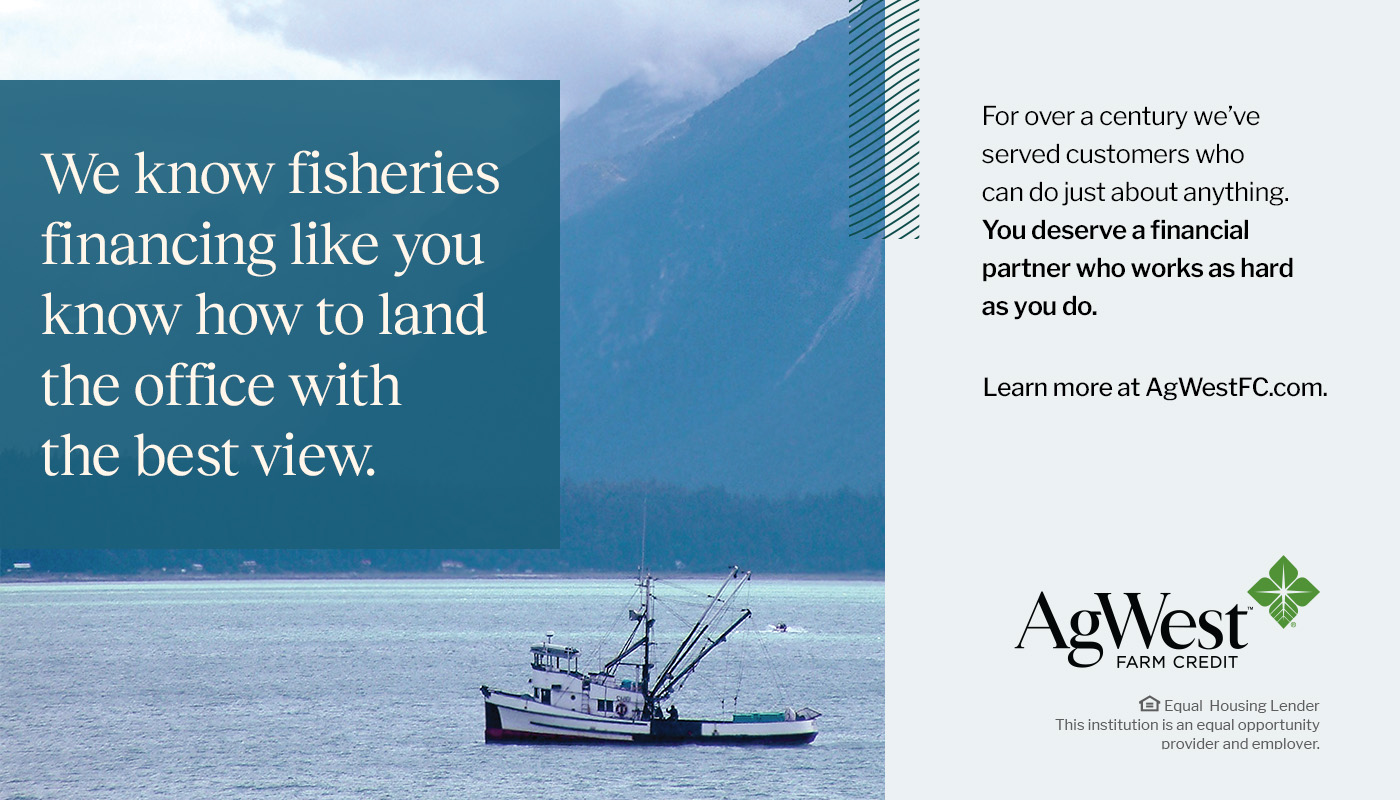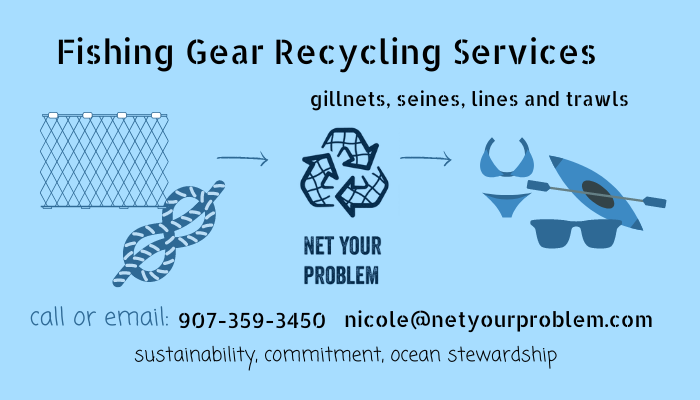Fish Factor by Laine Welch
March 12, 2021
Alaska’s salmon harvest for 2021 is projected to be a big one with total catches producing a haul that could be 61% higher than last year, due mostly to an expected surge of pinks.
Fishery managers are predicting a statewide catch topping 190 million fish compared to 118.3 million in 2020. The break down by species includes 46.6 million sockeye salmon (a 203,000 increase), 3.8 million cohos (1.4 million higher), 15.3 million chums (6.7 million more), 296,000 Chinook (up by 4,000) and 124.2 million pink salmon (a 63.5 million increase).
In its report titled Run Forecasts and Harvest Projections for 2021 Alaska Salmon Fisheries and Review of the 2020 Season, the Alaska Department of Fish and Game provides breakdowns for all species by region.
Along with the projected 49% increase in pink salmon catches, Bristol Bay will again rule the day with sockeye runs to the region’s nine river systems expected to exceed 51 million fish and a harvest of 36.35 million reds, 13% higher than the 10 year average.
Other highlights: the Southeast Alaska pink salmon harvest of 28 million is predicted to be in the average range. The total all-species take for the region is projected at 40.2 million fish.
At Copper River, the sockeye catch is projected at a meager 844,000 fish and 13,000 Chinook salmon.
For Prince William Sound, the total salmon harvest forecast calls for 59.7 million fish, of which nearly 55 million are pinks.
Upper Cook Inlet fishermen are projected to take just over 2 million salmon this summer, including 1.64 million sockeyes.
At Lower Cook Inlet the all-salmon forecast calls for a harvest of 3.2 million fish, of which 1.8 million are pinks.
Kodiak fishermen are expected to haul in 25.6 million salmon, including two million sockeyes and 22.5 million pinks.
At Chignik, a catch of 3.1 million salmon is projected of mostly pinks.
Fishermen at the South Alaska Peninsula could have an “excellent” haul of pink salmon of nearly 13 million.
For the Arctic-Yukon Kuskokwim region, managers predict below average fisheries across the board, including a catch of just over half a million chum salmon.
Grants for old fishing gear - For over a decade, derelict fishing nets, lines, pots and other marine debris has generated enough electricity to power over 44,000 homes per year.
That’s thanks to the Fishing for Energy program and its partners who are now looking to gather more gear at no cost to fishermen or coastal communities through its annual grant program.
Fishing for Energy is an arm of the National Fish and Wildlife Foundation which works with nearly 60 U.S. fishing communities in 14 states to help them dispose of old gear. Through March of 2020 the program provided collection bins at 56 ports and collected over 4 million pounds of gear normally destined for landfills, or which often ends up as derelict marine debris.
In many cases, the old nets and pots are first sorted at Schnitzer Steel Industries where the metals are recycled into rebar wire rod and other specialty products.
The remaining materials are converted into renewable energy at Covanta Energy-from-Waste facilities across the nation. Annually, Covanta converts nearly 22 million tons of waste from municipalities and businesses into clean, renewable electricity to power one million homes.
Eligible grant applicants have been expanded to include non-profits, state, local, municipal and tribal government agencies and organizations, educational institutions and ports. Non-federal matches in cash or in-kind services are strongly encouraged but not required.
Priorities this year include $15,000 grants for existing or new ports to install gear collection bins, or $10,000 to host gear collection events.
Other grants averaging from $75,000 to $150,000 will be awarded for Capacity and Logistics Development for long-term fishing gear removal programs.
To date, Fishing for Energy has awarded over $5 million in gear removal grants to more than 55 projects in 17 U.S. states, Washington, D.C., and Puerto Rico.
Deadline to apply for the latest round of grants is March 30.
Find links to an Easy Grants Help Desk at [email protected], or contact [email protected]. Check out a video at nbcnews.com called Fishing for Energy, ocean debris turned into fuel in Florida.
Covid cash for more fishing sectors – The $1.9 trillion American Rescue Plan Act of 2021 that was recently signed into law includes $4 billion for the U.S. Department of Agriculture to purchase food and agricultural commodities for distribution, including seafood.
A breakdown by Undercurrent News shows that the money, which must be used during the 2021 fiscal year, also can be made available for grants and loans for small or midsized food processors or distributors, seafood processing facilities and processing vessels, farmers markets, producers, or other organizations to respond to COVID-19, including for measures to protect workers against the virus.
The Act also will prioritize grants to “small business concerns owned and controlled by women, veterans, or those who are socially and economically disadvantaged.”
Grants to eligible businesses will not exceed $10 million and also will be limited to $5 million per physical location.
Seafood.com reports that grant funds can be used for expenses incurred as a direct result of, or during, the pandemic, including payroll costs; payments of principal or interest on mortgages; rent payments; utilities; maintenance expenses such as constructing outdoor seating; supplies, including protective equipment and cleaning materials; food and beverage expenses; supplier costs; operational expenses; paid sick leave; and “any other expenses that the Administrator determines to be essential to maintaining the eligible entity.”
The Rescue Plan narrowly passed last week by a 50-49 vote in the U.S. Senate. Both Alaska senators Murkowski and Sullivan voted against the bill.
Fish Board push back - The state Board of Fisheries voted unanimously on March 8 to not double up its meeting cycle to include two Alaska regions, and instead advance them by one year.
The board, which regulates commercial, sport, subsistence and personal use fisheries in state waters, meaning out to three miles, would normally be wrapping up a roster this month that included 275 proposals for Southeast, Yakutat, Prince William Sound and statewide shellfish. But the ongoing Covid pandemic curtailed those plans.
“Starting in October of 2021 it will do its work session followed by a Prince William Sound meeting in November and December and the Southeast finfish and shellfish meetings in January, and then do its statewide all shellfish meeting in March of 2022,” said boards director Glenn Haight.
In October 2022 the Board’s work session will be followed by a two day Pacific cod meeting and then fishery issues for Bristol Bay and Chignik, the Bering Sea, Arctic-Yukon- Kuskokwim and Alaska Peninsula regions.
The doubling up faced push back from the public and regional advisory committees.
“I think it was an admirable thing that the Board was trying to get back on track in regard to the pandemic we’re dealing with. Recognizing the headwinds and navigating through the comments, I think it’s important that we listen to the constituents,” said unconfirmed member Abe Williams.
The double up also would have cost an additional half million dollars in a supplemental budget, said ADF&G Commissioner Doug Vincent-Lang.
Haight advised that the call for proposals for Bristol Bay, Chignik and regions further west that were due on May 10 of this year also has been extended.
“For anyone out there fastidiously creating proposals for those meetings to turn them in this May, no need to hurry as you’ll have almost a full year.”
Find more at www.alaskafishradio.com






